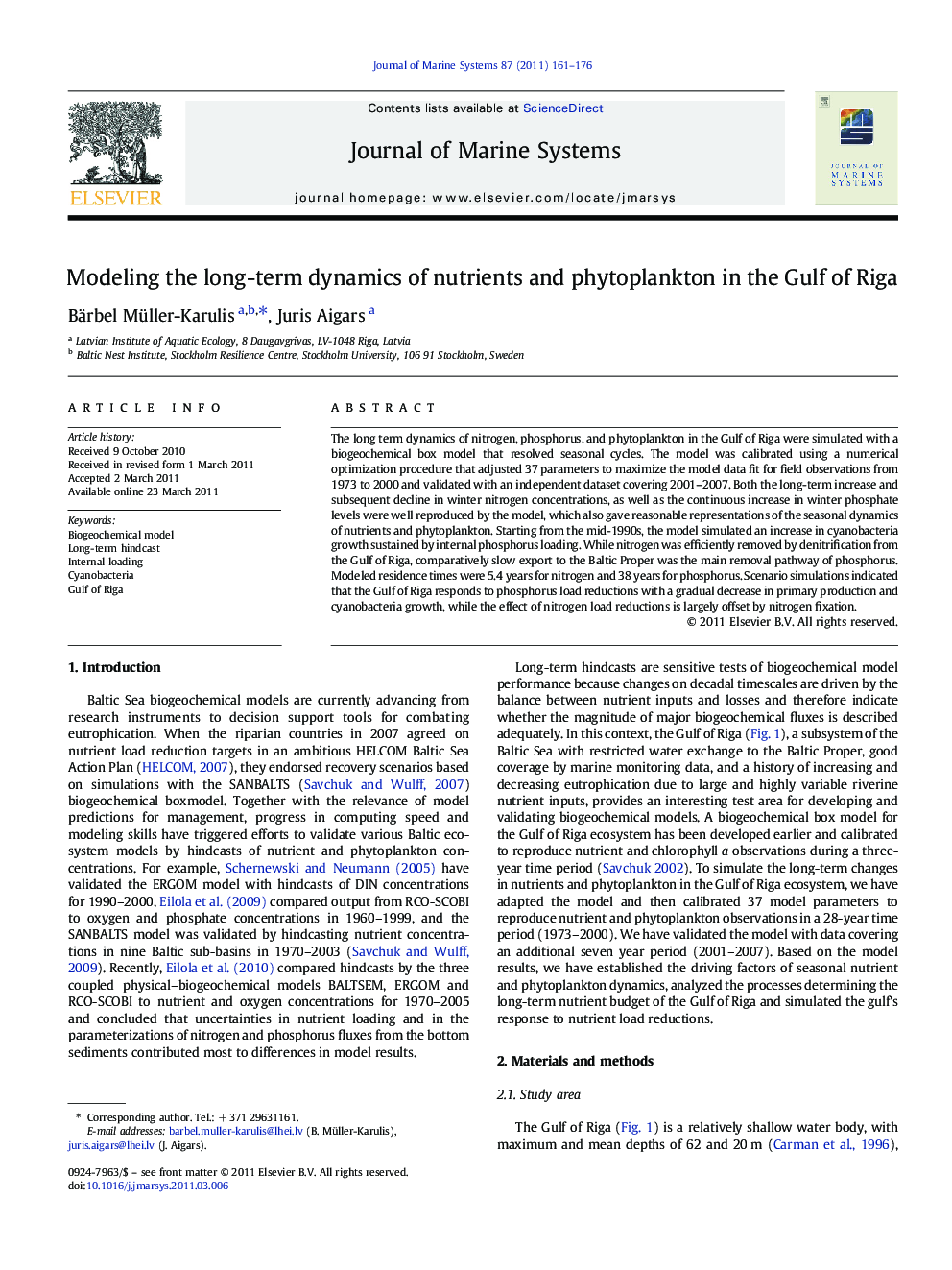| Article ID | Journal | Published Year | Pages | File Type |
|---|---|---|---|---|
| 4548450 | Journal of Marine Systems | 2011 | 16 Pages |
The long term dynamics of nitrogen, phosphorus, and phytoplankton in the Gulf of Riga were simulated with a biogeochemical box model that resolved seasonal cycles. The model was calibrated using a numerical optimization procedure that adjusted 37 parameters to maximize the model data fit for field observations from 1973 to 2000 and validated with an independent dataset covering 2001–2007. Both the long-term increase and subsequent decline in winter nitrogen concentrations, as well as the continuous increase in winter phosphate levels were well reproduced by the model, which also gave reasonable representations of the seasonal dynamics of nutrients and phytoplankton. Starting from the mid-1990s, the model simulated an increase in cyanobacteria growth sustained by internal phosphorus loading. While nitrogen was efficiently removed by denitrification from the Gulf of Riga, comparatively slow export to the Baltic Proper was the main removal pathway of phosphorus. Modeled residence times were 5.4 years for nitrogen and 38 years for phosphorus. Scenario simulations indicated that the Gulf of Riga responds to phosphorus load reductions with a gradual decrease in primary production and cyanobacteria growth, while the effect of nitrogen load reductions is largely offset by nitrogen fixation.
Research highlights► Biogeochemical model reproduced 35-year dynamics of N and P in the Gulf of Riga. ► 37 model parameters calibrated by simulated annealing. ► N is efficiently removed by denitrification; P elimination pathways are slow. ► Primary production declines after P load reduction; N load reduction is offset by cyanobacteria blooms.
